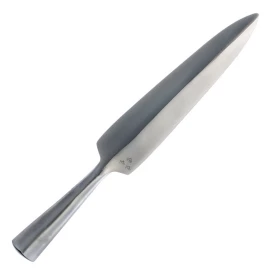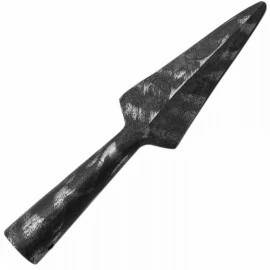Germanic Framea, Damascus Steel Spearhead, 24cm
This reconstruction of a germanic framea follows a southern germanic find from approx. 1st to 5th centuries A.D. The frame (lat. framea) is a germanic javelin similar to the ango spear. It differs from the germanic ger spear however. Tacitus (Germania 6) describes the equipment of the Germanic warrior as follows: Even iron is not plentiful with them, as we infer from the character of their weapons. But few use swords or long lances. They carry a spear (framea is their name for it), with a narrow and short head, but so sharp and easy to wield that the same weapon serves, according to circumstances, for close or distant conflict. As for the horse-soldier, he is satisfied with a shield and spear; the foot-soldiers also scatter showers of missiles each man having several and hurling them to an immense distance, and being naked or lightly clad with a little cloak. [from Wikipedia] More information...
Recommended offer
Germanic Framea, Damascus Steel Spearhead, approx. 24cm
Our replica is hand-forged from 512-layer Damascus steel. The cutting edge is slightly sharpened. It has not been polished on purpose. The welding traces lend it an authenic look.
Delivery does not include the shaft!
The terms Damascus steel or damascene designate a compound steel forged out of two or more different types of steel. It is named after its birthplace, the Syrian city of Damascus, a former stronghold of the patterned steel production.
As a common practice, a harder high carbon steel and a milder low carbon steel are repeatedly forge welded and folded together. The high carbon steel ensures a higher hardness, a better temperability and longer lasting edge retention, whereas the milder steel confers greater blade flexibility and tensile strength. This procedure, which arose in a time where steel qualities were often low and inconsistent, enables to combine the positive attributes of the various steel grades.
Besides, the different shadings generated by the varying carbon content of the alternating layers engender strikingly beautiful patterns, such as the twisted motif called Torsion Damascus pattern or the Rose Damascus pattern. Undoubtedly, these unusual patterns partly explain why inherent magical properties were attributed to the Damascus steel blades of the Middle Ages. Such a damascene sword blade is for example depicted as a bloody worm or a poisonous snake in the Edda.
- Material: Damascus steel (512 layers)
- total length: approx. 24.5cm
- blade length: approx. 12cm
- nozzle length: approx. 12.5cm
- nozzle diameter: approx. 22mm
- weight: approx. 210 g
- The same spearhead is also available made from high carbon steel, ULF-SH-07.
This is an original ULFBERTH® product.
We are here for you








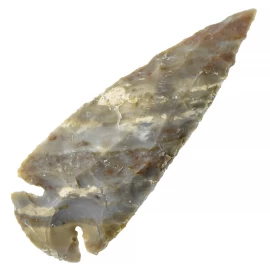


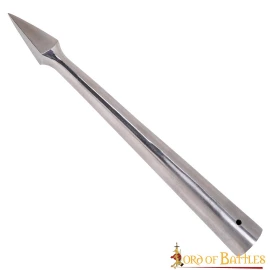



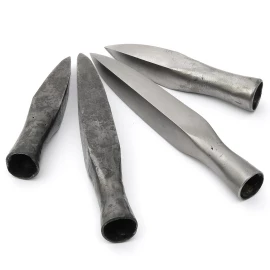





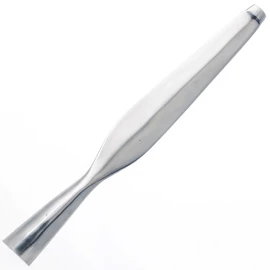



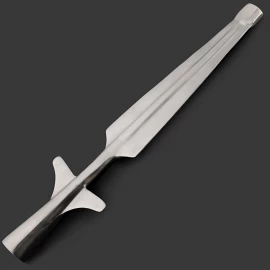
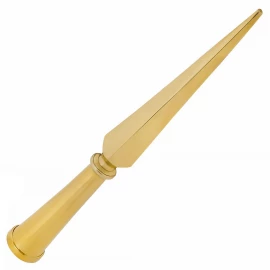

.2152382459.1716839934.jpg.webp)
.2152382459.1716840209.jpg.webp)








